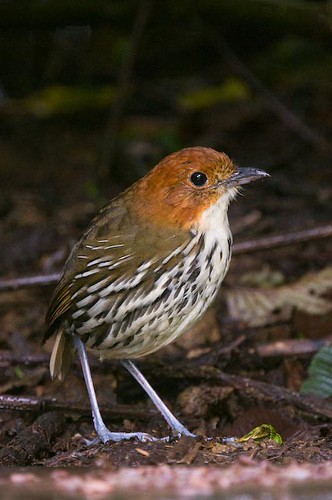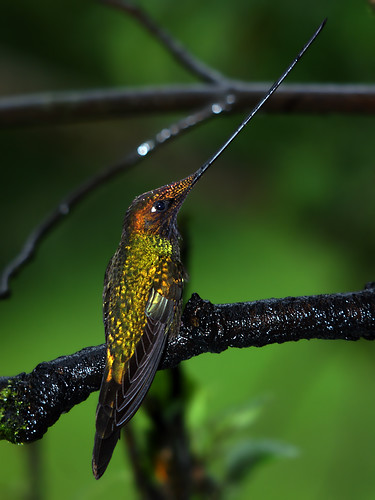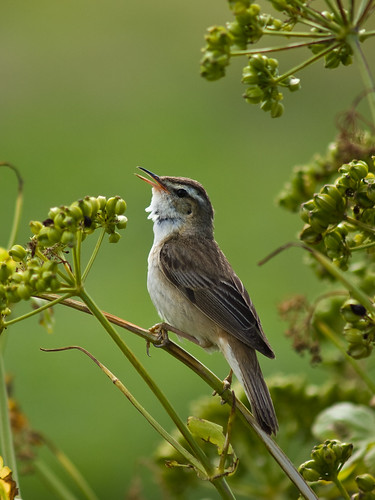The tubenoses — the petrels, shearwaters and albatrosses — are a wonderful group of birds saddled with a slightly unfortunate name. It’s true that they do have tubular nasal passages on top of their beaks, presumably to help them sniff out food at sea, but it’s not exactly a name full of the romance and mystery of the open ocean.
But then you or I might not look at horses, tapirs and rhinoceroses and feel the most interesting thing about them is that they have odd numbers of toes. That’s taxonomists for you: they concentrate on what’s most distinctive, not what’s most exciting.
And for me, what makes the tubenoses so wonderful is that connection with the sea. They are genuinely sea-birds; to watch a shearwater or an albatross skimming between the waves is to see a bird completely inhabiting a world that we can only visit. The open sea is where they are at ease; for them, dry land is where the danger lies. Most species only come to land to breed, and even that, only at night. I visited Skomer last year, the Welsh island with about 120,000 pairs of Manx Shearwaters — 30% of the world’s population — and if it wasn’t for the bodies of those who had fallen prey to the Great Black-backed Gulls, you would never have known they were there at all. To see them, I had to take a boat trip out as night fell, to watch the flocks building up offshore.
But shearwaters and albatrosses, with their stiff-winged, banking flight, have a sort of purposeful quality, a robustness that seems fitting for a life at sea. What’s amazing about the storm-petrels is how completely unsuited to that life they seem. This is a group of Wilson’s Storm-petrels:
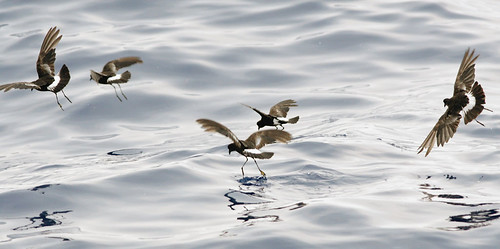
They are little, delicate, fluttery birds, and when they are feeding, they flutter along close to the water and patter their little feet on the surface. Supposedly the name, petrel, is a diminutive of Peter because, like St. Peter, they walk on the water.
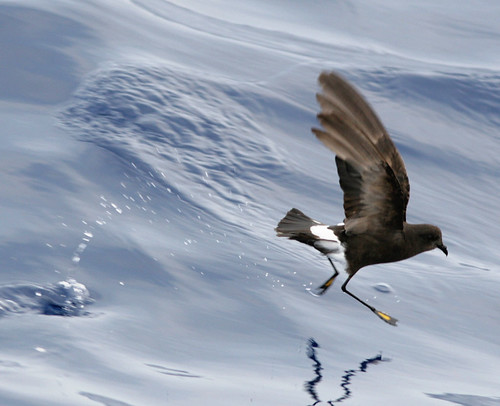
It’s not so surprising that they feed at sea, perhaps, but the idea that they make their whole lives at sea, that they spend the winter out among the big rolling grey waves of the open ocean, is astonishing.
It’s not just storm-petrels, of course. Puffins, those comical little birds which look like cuddly toys, or earnest, permanently surprised clowns: they overwinter out in the middle of the north Atlantic. Writing this at night in London, with a cold breeze coming from the window, it’s an extraordinary thought, all those little birds sitting out there on the water somewhere in the cold and the dark.
» Both photos of Wilson’s Storm-petrels (1, 2) are © Patrick Coin and used under the CC by-nc-sa licence. Incidentally, check out this hypnotic video I found while looking for photos.



